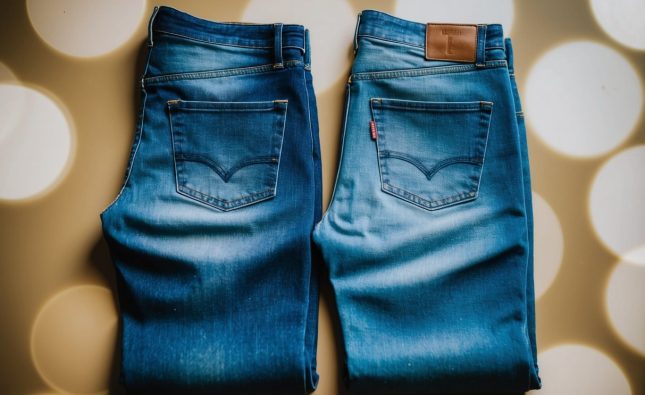
Hoodies have become a staple in modern wardrobes, offering comfort and style across various contexts. With options ranging from pullover styles to zip-ups, the variety can be overwhelming. Understanding the differences between types of hoodies can help anyone choose the one that best suits their lifestyle and personal style.

Different materials also play a crucial role in the functionality of hoodies. Cotton blends provide breathability, while fleece offers warmth, making some ideal for cooler weather. Each style and fabric serves a distinct purpose, whether for casual outings, workouts, or layering during colder months.
As consumers become more discerning, knowing the unique features of each hoodie type allows for smarter purchasing decisions. Exploring the nuances in design, fit, and fabric can lead to the perfect hoodie choice, tailored to individual needs and preferences.
History and Evolution of Hoodies
The hoodie has transformed significantly since its inception. Understanding its origins and trajectory reveals important aspects of its design and cultural significance.
Origins of the Hoodie
The classic hoodie traces its roots to the early 1930s. It emerged in the United States, where Champion Products created it for athletes. The primary intent was functionality—keeping athletes warm during outdoor training.
By the late 1930s, the hoodie was adopted by workers in cold environments, enhancing its practical appeal. Its initial design featured a front pocket, adjustable drawstring hood, and soft fabric, making it comfortable and versatile.
Hoodies in Fashion
In the 1970s, the hoodie transitioned into mainstream fashion. It began appearing in urban streetwear, worn by hip-hop artists and skateboarders. Designers embraced the hoodie, elevating it from workwear to high fashion.
This shift led to variations in material and style, such as cropped hoodies and oversized fits. Brands like Supreme and Off-White helped popularize the hoodie as a symbol of contemporary style.
Cultural Impact
Hoodies have played a significant role in various cultural movements. They became emblematic of youth culture, often associated with rebellion and nonconformity.
Events such as the Trayvon Martin case highlighted the hoodie as a symbol of social justice. This incident provoked dialogue about race, identity, and safety, showcasing the garment’s power beyond mere fashion.
Hoodies continue to influence fashion, self-expression, and societal issues, solidifying their place in modern culture.
Types of Hoodies
Hoodies come in several styles, each catering to different preferences and uses. Understanding the key characteristics of each type can help individuals choose the right hoodie for their needs.
Pullover Hoodies
Pullover hoodies are characterized by their simple design. They feature a front pocket and a hood but no zippers or fasteners. Typically made from soft materials like cotton or fleece, they provide warmth and comfort.
These hoodies are versatile and can be worn casually or layered for additional warmth. They are popular for lounging at home or for outdoor activities in cooler weather.
Pullover hoodies often come in various colors and graphic designs, making them a favorite among younger demographics. The absence of zippers contributes to their cozy feel.
Zip-Up Hoodies
Zip-up hoodies include a full- or half-length zipper that extends from the neck down the front. This feature allows for easy wear and temperature regulation.
These hoodies are practical, as they can be easily put on or removed as needed. Zip-up designs often include side pockets and a snug hood, enhancing their functionality.
They are great for layering over shirts or under jackets. Many athletes and fitness enthusiasts prefer zip-up hoodies for workouts, as they can be opened during exercise to stay cool.
Athletic Hoodies
Athletic hoodies are designed specifically for active wear. They often employ moisture-wicking fabrics that help regulate body temperature and keep the wearer dry during physical activities.
These hoodies are typically more fitted, providing comfort without excess bulk. Features like thumbholes and reflective strips may enhance functionality and safety during outdoor workouts.
Athletic hoodies cater to sports enthusiasts and those seeking active lifestyles. Their lightweight construction allows for ease of movement, making them suitable for running, gym workouts, and other activities.
Designer Hoodies
Designer hoodies represent a blend of fashion and function. They are crafted from high-quality materials and often feature unique designs, logos, or signature embellishments.
These hoodies aim to make a fashion statement while providing comfort. Many luxury brands offer limited editions that become sought after by collectors.
Designer hoodies can vary in price significantly, reflecting the brand’s reputation and quality. They appeal to those who value style and exclusivity in their casual wear, often worn in trendy settings.
Material and Fabric Choices

The choice of materials and fabrics significantly impacts the comfort, durability, and style of hoodies. Understanding the different options can help individuals select the best hoodie for their needs.
Cotton and Blends
Cotton is a widely preferred fabric for hoodies due to its softness and breathability. It provides a comfortable fit, making it ideal for casual wear. Cotton hoodies are often blended with synthetic fibers like polyester to enhance durability and reduce shrinkage.
Blends can offer various benefits, including moisture-wicking properties and increased resistance to wrinkles. Here’s a quick breakdown of common blends:
- Cotton-Polyester Blend: Combines comfort and durability, commonly found in everyday wear.
- Cotton-Spandex Blend: Adds stretch for increased mobility, suitable for athletic use.
Choosing cotton or blended fabrics results in versatile hoodies for different activities and preferences.
Polyester and Performance Fabrics
Polyester is known for its strength and moisture-wicking capabilities. Hoodies made from 100% polyester are lightweight and allow for quick drying, making them suitable for athletic activities.
Performance fabrics often incorporate technologies to enhance their functionalities. For example:
- Moisture-Wicking Materials: These fabrics draw sweat away from the body, keeping the wearer dry.
- Breathable Mesh: Enhances airflow, ideal for high-intensity workouts.
Polyester hoodies are also resistant to shrinking and stretching, maintaining their shape over time.
Eco-Friendly Materials
Eco-friendly materials are gaining popularity as consumers become more environmentally conscious. Fabrics like organic cotton, hemp, and recycled polyester are options in sustainable hoodie production.
Organic cotton is grown without harmful chemicals, resulting in a softer fabric. Hemp is known for its durability and ability to grow in various climates, requiring less water than conventional crops.
Recycled polyester, made from post-consumer plastic bottles, reduces waste and energy consumption in production. Choosing eco-friendly materials offers a way for individuals to make a positive impact while enjoying stylish and functional hoodies.
Considerations for Purchase
When choosing a hoodie, several factors play a crucial role, such as comfort, durability, maintenance, and price. Evaluating these aspects can guide buyers toward making an informed decision.
Comfort and Fit
Comfort is paramount when selecting a hoodie. The fabric should feel soft against the skin, with materials like cotton or fleece being popular choices.
Fit is also essential. Hoodies come in various styles, including slim-fit, regular-fit, and oversized. It is important to consider how the hoodie will be worn—layered over other clothing or as a standalone piece.
Buyers should try on different sizes and styles to determine which provides the most comfort, especially around the shoulders, chest, and waist.
Durability and Quality
Durability varies significantly among different hoodie brands and materials. A well-constructed hoodie should withstand regular wear and laundering without losing shape or softness. Look for features like reinforced seams and quality stitching.
Materials like cotton-polyester blends often offer a good balance of comfort and durability. High-quality hoodies resist pilling, fading, and shrinking, which are common issues with cheaper options.
Researching customer reviews can provide insight into the long-term performance of particular brands and materials.
Care and Maintenance
Caring for a hoodie properly extends its lifespan. Most hoodies are machine washable, but it’s essential to check the care label for specific instructions. Washing in cold water and air drying can preserve the fabric’s integrity.
Some hoodies may require special care, such as avoiding bleach or fabric softeners. Knowing the care requirements before purchase can save future hassle and ensure the garment retains its original qualities.
Considering how often a hoodie will need laundering and the appropriate cleaning methods is vital for maintaining its appearance and comfort.
Value for Money
Investing in a quality hoodie often leads to better value in the long run. While cheaper options may be appealing initially, they may not offer the same durability and comfort—leading to more frequent replacements.
Buyers should consider the hoodie’s features and materials in relation to the price. High-quality options might have a higher upfront cost but can provide improved comfort and longevity.
A well-rounded assessment of price versus quality characteristics can help ensure satisfaction with the purchase.












